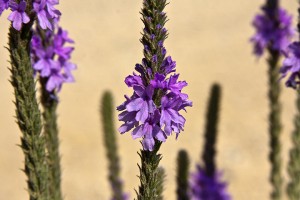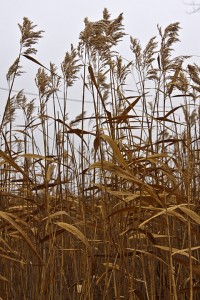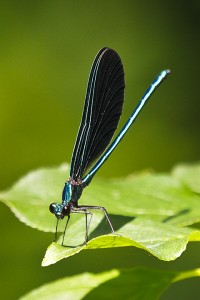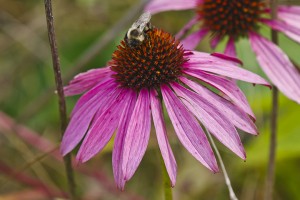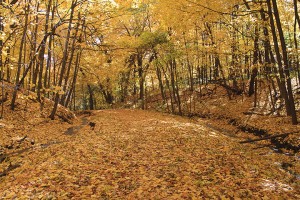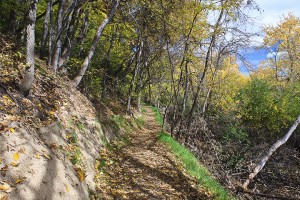There are six vervains (genus Verbena) found in Minnesota. Hoary vervain (Verbena stricta) is by far the showiest yet it is considered a weed. It is common in the southern half of Minnesota in prairies, fields, roadsides, and other disturbed areas. It is especially common in overgrazed pastures because the taste is bitter and unpalatable to cattle. It spreads easily by seed and with a root system that can extend 12 feet in depth, is very drought tolerant.
Hoary vervain is distinguished by its grayish-green, densely hairy foliage; broad leaves with very short stalks or no stalks at all; an inflorescence of a solitary spike or group of 3 to 5 spikes; and large corolla limbs.

